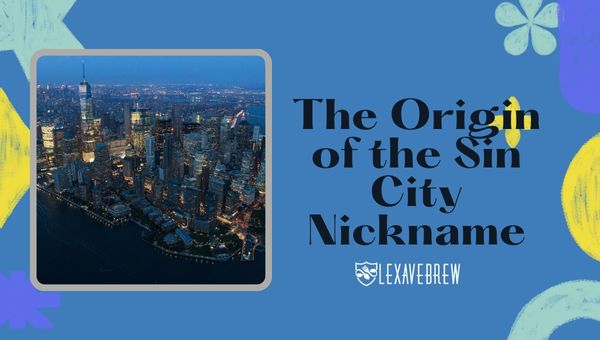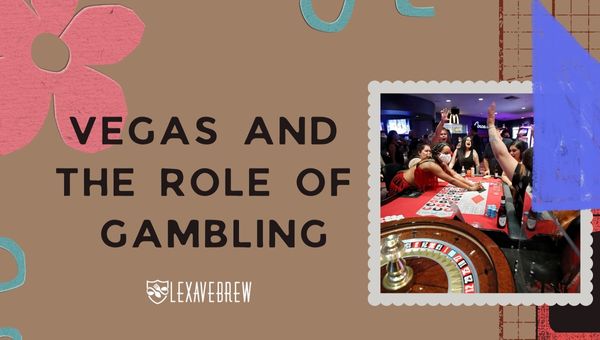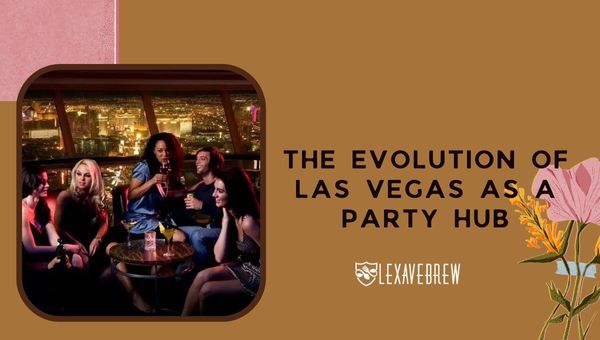Las Vegas has long been known as Sin City, and for good reason. Its reputation as a place where pleasure-seekers indulge in various vices is no secret. But why is this Nevadan metropolis saddled with such a nickname? I’m here to explore the history and the reasons behind Why Las Vegas is called Sin City.
The name “Sin City” can be traced back to the 1940s when casinos and gambling became legalized, and the city transformed into the ultimate adult playground. Entertainment options abounded, and an atmosphere of hedonism and indulgence permeated the air.
With time, the city’s offerings expanded beyond gambling to include many adult entertainment venues, top-notch restaurants, and glitzy shows, further solidifying its status as a city where anything goes.
Las Vegas’s nickname “Sin City” reflects its historical connection to vice and its longstanding commitment to living on the edge.
From gambling and nightlife to the city’s vibrant entertainment scene, it’s no surprise that Las Vegas remains a haven for those seeking a getaway free from judgment and restrictions.
Also Read: Cosmopolitan Las Vegas Pool
The Origin of the Sin City Nickname
Las Vegas is commonly referred to as Sin City for various reasons. Let’s explore the origin of this infamous nickname and understand why it’s called Sin City.

The reason why Las Vegas is called Sin City is believed to have originated from the extensive legal and illegal activities in the Vegas area during the mid-20th century.
Vegas was known as a hotspot for gambling before it was even legalized in Nevada in 1931. This and the city’s rapid growth helped create a reputation for Las Vegas, where people could escape and indulge in the things they couldn’t find elsewhere.
Another reason why Las Vegas is called Sin City is the rise of organized crime in Las Vegas. In the 1940s and 1950s, mobsters like Bugsy Siegel and Meyer Lansky invested heavily in developing lavish casino resorts like the famous Flamingo Hotel.
While this helped to establish Las Vegas as a gambling oasis more firmly, it also linked the city with the darker world of crime and corruption.
Beyond gambling, Las Vegas gained its reputation for sins due to the presence of adult entertainment, which has historically been more accessible in this city compared to other places in the United States.
In fact, in Nevada, outside of Las Vegas city limits, prostitution remains legal. Also, the city hosts numerous adult-themed shows and performances, adding to the overall reputation.
Additionally, the 24-hour availability of alcohol further contributes to the Sin City nickname. Unlike many states, Nevada does not have any restrictions on when alcohol can be sold or consumed, which allows party-goers to indulge in alcohol at all hours of the day and night.
Taking all of this into account, the nickname Sin City can be attributed to:
- The widespread legalization of gambling
- The influence of organized crime in the development of casino resorts
- The accessibility of adult entertainment in the city
- The 24-hour availability of alcohol
Las Vegas has since undergone a major transformation, intending to shed the Sin City identity and promote itself as a more family-friendly destination.
Nonetheless, traces of its historical reputation still linger, and people continue associating Las Vegas with its sinful past, making the nickname Sin City unforgettable.
Also Read: Best Las Vegas Breweries
Vegas and the Role of Gambling
When considering why Las Vegas is called Sin City, it’s hard to ignore the role of gambling. For many people, Las Vegas is synonymous with the allure and excitement of casino games. The advent of large-scale gambling establishments played a central role in the city’s development and growth.

It all started in the early 1930s when Nevada legalized casino gambling to recover economically from the effects of the Great Depression. The first Las Vegas casino, Northern Club, was issued a gaming license in 1931, paving the way for a growing industry.
Since then, the Las Vegas Strip has become home to some of the world’s most iconic and luxurious casinos. A few noteworthy establishments include:
- Caesars Palace: Opening in 1966, Caesars Palace is an ancient Rome-themed resort and casino that delivers an extravagant experience.
- Bellagio: Known for its stunning fountains and upscale amenities, the Bellagio opened in 1998 and has become an emblem of Las Vegas luxury.
- MGM Grand: Opening its doors in 1993, the MGM Grand was once the largest hotel in the world and remains an icon of Las Vegas entertainment.
The widespread availability of gambling activities in Las Vegas has led to the city’s reputation as a gambling haven.
According to data from the Center for Gaming Research at the University of Nevada, Las Vegas, revenues from gambling have grown substantially over the years. Below are the total gaming revenues in millions of dollars for selected years:
| Year | Revenue (in million $) |
|---|---|
| 1990 | 2,726 |
| 2000 | 7,625 |
| 2010 | 9,392 |
Another factor in Las Vegas’s reputation as Sin City is the unique gambling laws in Nevada, which permit:
- A wide assortment of casino games, including table games and slot machines
- Sports betting, both onsite at casinos and through mobile apps
- 24/7 access to gambling activities, with no mandated closing hours for casinos
Moreover, the lucrative gambling industry in Las Vegas has attracted many tourists who come to try their luck and enjoy the city’s entertainment options. In 2019, Las Vegas recorded around 42.5 million visitors, many of whom came to experience the thrill of gambling.
Also Read: Best Restaurants in Venetian Palazzo Las Vegas
The Evolution of Las Vegas as a Party Hub
Long before Las Vegas became the go-to destination for wild nights and unforgettable stories, it was just a small railroad town in the Southwest. Over the years, the city has evolved into the party hub we know today, and here’s how it happened.

In the early 20th century, the construction of the Hoover Dam brought thousands of workers to the area, fueling the growth and development of Las Vegas.
Soon enough, these workers sought entertainment options, and the city began building casinos and hotels to cater to their needs. In 1931, Nevada legalized gambling, which set the stage for Las Vegas to transform into a gambling mecca.
Throughout the 1950s and 1960s, Las Vegas became a hotspot for organized crime, which helped further solidify its reputation as “Sin City.”
During this time, well-known mobsters like Bugsy Siegel and Meyer Lansky owned and operated some of the city’s most famous casinos, and their influence only fueled America’s fascination with this desert oasis.
By the 1980s, corporations started investing heavily in the city, leading to the construction of the massive hotels and resorts we see today.
The introduction of lavish resort properties like Caesars Palace and the MGM Grand helped cement Las Vegas as a premier vacation destination, appealing to those seeking both luxury and excitement.
Las Vegas has masterfully marketed itself as a sanctuary for adult indulgence, using fun, fantasy, and escape themes to attract tourists worldwide. Key contributions to its image as a party hub include:
- The iconic “What Happens in Vegas, Stays in Vegas” ad campaign started in 2003 and has helped solidify the city’s reputation as a no-holds-barred adult playground.
- Thriving nightlife scene, complete with world-class nightclubs, impressive show productions, and regular appearances by renowned DJs.
- Legalizing recreational marijuana in Nevada in 2017 further contributed to its hedonistic image.
To summarize, the evolution of Las Vegas as a party hub can be traced back to its early days as a small railroad town and the legalization of gambling in 1931.
Its association with organized crime, transformation into a world-class entertainment destination, and strategic marketing efforts encouraging adult indulgence have all played a pivotal role in shaping its image.
Today, Sin City is a testament to its rich history and the allure of excitement and decadence it offers visitors worldwide.
Also Read: Las Vegas Festival Grounds: History, Events, and More
Conclusion
In recent years, Las Vegas has made efforts to present itself as a destination with more to offer than just casinos and adult entertainment. The city has expanded its appeal by investing in family-friendly attractions, upscale shopping centers, and renowned restaurants.
Nonetheless, the nickname “Sin City” persists, both as a testament to its history and as an indicator that Las Vegas is still a place where people can unabashedly enjoy the thrilling side of life.
To sum it up, Las Vegas earned its reputation as “Sin City” due to a combination of historical factors and a culture centered around entertainment and indulgence.
While the city has evolved, that label continues to attract visitors looking for a unique experience away from the everyday. I hope this article on “Why Las Vegas is called Sin City” was helpful.
ThankYou 🙂

